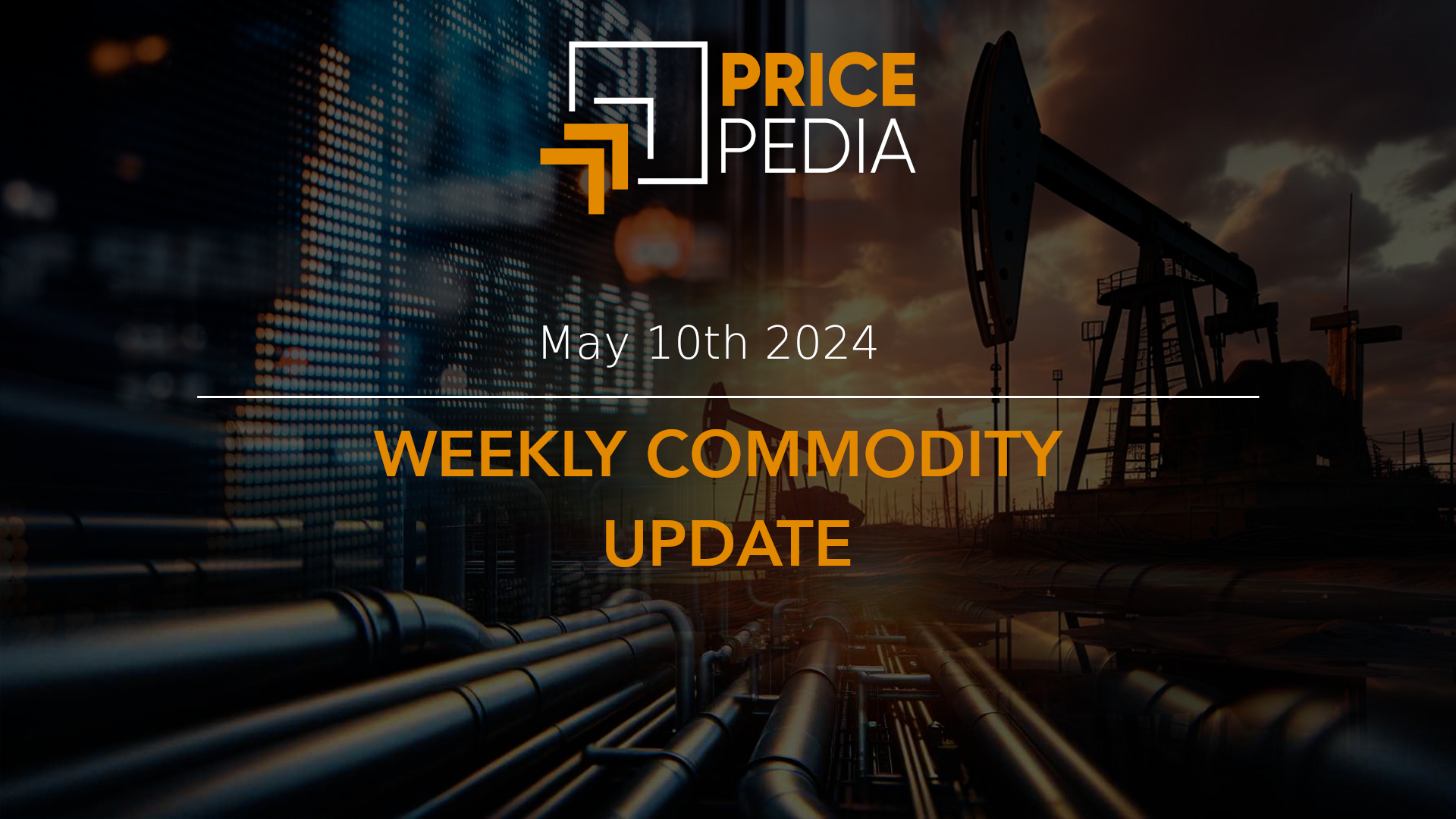Weak demand drives down commodity prices
First signs of recovery in industrial production, but weakness in commodity demand remains high
Published by Luca Sazzini. .
Conjunctural Indicators Commodities Financial WeekThis week, after a rise that lasted more than two months, the World Container Index, the main benchmark index for the cost of international shipping, dropped again.

In a context of weak global demand, with container ship freight prices already very high, a glimmer of a slowdown in the Middle East war was enough to bring down the ocean freight cost index. The routes which suffered the largest price reductions this week were Shanghai-Genoa and Shanghai-Rotterdam, which experienced weekly decreases of -8.23% and -6.39% respectively.
On the other hand, the price changes on the Shanghai-Los Angeles (+1.73%) and Shanghai-New York (+0.44%) routes remained slightly positive, indicating, therefore, that the global logistics problem is still far from being solved.
US interest rates still unchanged for months
The Federal Reserve (FED), as expected by analysts, once again kept interest rates unchanged between 5.25% and 5.50%.
At this week's meeting, Chairman Powell downgraded market expectations, stating that the Governing Council does not expect an interest rate cut in March. The FOMC (Federal Open Market Committee of the US central bank) still considers the US inflation rate to be too high, and although there is confidence about an upcoming drop in inflation, we still have to wait for better data before an easing of monetary policy can be implemented. Analysts currently expect the next interest rate cut in June.
Weak demand in commodity markets
Commodity markets still remain affected by the current phase of weak global demand, although first positive news is starting to come from the new data on China's two PMIs. China's manufacturing PMI, as measured by the NBS (National Bureau of Statistics of China), rose monthly from 49.0 to 49.2, while the manufacturing index measured by Caixin (a private Chinese media group) continued to remain at the 50.8 level. These figures are due to both an improvement in production and an increase in foreign demand.
A broader signal of a possible recovery in global activity levels is given by the dynamics of world trade in constant prices and the industrial production index, recently updated by PricePedia to January[1]. These two indices are shown in the graph below. They point to a gradual recovery in world trade in recent months, after the decline that occurred in late 2022 and early 2023. The recovery in world trade in January 2024 is also accompanied by a positive signal from world industrial levels.
Industrial production and world trade index

[1] The two indices, contained in the Economic Indicators section of PricePedia, are updated monthly through nowcasting methodologies.
This latest rise in the industrial production index is certainly to be interpreted as a positive sign, but it is still not enough to revive global demand in the commodity market.
Faced with weak demand, producers are trying to support commodity prices by reducing supply.
These actions are particularly evident in the energy sector: the Saudi Aramco company, for example, has decided to abandon its plans to increase oil production declared last November. The company had indeed intended to increase oil production capacity by 13 million barrels per day, but weak Asian demand, especially from China and India, forced the company to revise its plans. In the meantime, OPEC+ continues to cut oil production, as the current drop in demand has already pushed Brent prices back down, which has been further accentuated by the Fed's latest statements.
Still on the energy front, there was a positive weekly change in European natural gas prices TTF (Netherlands), mainly due to fears of a supply risk from the Middle East.
As far as the other main sectors are concerned, there is a decline in plastic materials and a relative stability in industrial metals.
On the other hand, there are strong positive changes in the food market for tropicals, caused by unfavourable weather conditions. In particular, the price of cacao quoted at the CME has reached its all-time high during this week.
The main cocoa growing region of West Africa has been hit by the dry winds of Harmattan, which destroyed the cocoa pods, ruining the next harvest of Ivory Coast. In addition, weather conditions in Ghana and Nigeria were particularly hostile to cocoa production.
Below is the graph of the price of cocoa quoted at the Intercontinental Exchange.

ENERGY
This week’s PricePedia Energy Financial Index followed a decline driven primarily by falling oil prices. Brent oil closed the week at $77.3 per barrel; WTI oil closed at $72.3/barrel.
PricePedia Financial Index of energy prices in dollars

The heatmap of energy products, in addition to reporting the fall in oil and thermal coal prices, highlights the decline in the three-day moving average of US natural gas prices, while the prices of liquid propane have risen.
HeatMap of energy prices in euros

PLASTIC MATERIALS
The financial index of plastics listed in China shows a decline in plastics prices driven by the fall in oil prices.
PricePedia Financial Index of dollar prices of plastic materials

FERROUS METALS
The two ferrous financial indices show dynamics with increasing differences. In fact, the Chinese ferrous index declined significantly in the second half of the week, while the European index remained relatively stable.
PricePedia Financial Indices of dollar prices of ferrous metals

The ferrous metal price heatmap shows a reduction in US hot coil prices and a reduction in stainless coil prices in China.
HeatMap of ferrous metal prices in euro

INDUSTRIAL NON-FERROUS
Both industrial non-ferrous indices remained relatively stable, but ended the week with a negative change almost offsetting the strong gains of the previous week.
PricePedia Financial Indices of dollar prices of industrial non-ferrous metals

The heatmap shows a reduction in the prices of aluminium alloys and nickel.
HeatMap of industrial nonferrous metal prices in euros

FOOD
The tropical food index continues its upward price trend; the cereals index shows mixed fluctuations, while the oils index continues its downward trend.
PricePedia Financial Indices of food prices in dollars



